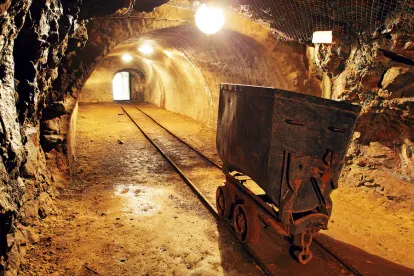Over the past twelve months, we have witnessed a rapid evolution in the way that E&P industry participants acquire and own minerals. While the perpetual nature and non-cost bearing aspects of mineral ownership have long aided in maintaining a floor value in the asset class, an influx of money, technical and financial expertise has increased industry participants’ understanding of the value of minerals and has resulted in minerals commanding renewed focus from investors. This has resulted in a complete reorganization of the minerals market and created opportunities for public and private companies alike to participate in the upside that minerals offer.
With the potential for this market to expand rapidly, it is timely to discuss some of the unique opportunities and risks that investors are likely to encounter as the transactional landscape for mineral deals increases in both size and level of sophistication.
The Evolving Minerals Market
Historically, mineral packages were acquired and aggregated by small groups of investors with pooled capital. These investors executed a large number of small transactions sourced by landmen, personal contacts or by sending out blanket solicitation mailers to mineral owners shown on county tax rolls. Many of these mineral buyers acted as middlemen to flip mineral interests and some just acquired as much as they could to create portfolios of “mailbox money” generated on royalties from the mineral interests that were producing.
In many cases, the traditional acquisition platform continues to dominate and companies of all sizes focus on growing their positions organically by executing a large number of smaller deals for disparate mineral fee interests in their geographic area of choice. However, as the industry has recognized the value that minerals represent, many private equity and public companies have entered and expanded the market for these deals.
Indeed, these forces have proven to be quite disruptive as investors with different time horizons, target rates of return and mineral buying strategies have drastically increased competition for mineral acquisitions. This has resulted in opportunities for traditional mineral sector participants to take on the role of broker or middlemen in compiling mineral packages for larger investors. Such new investment in the minerals industry also has expanded the sources of capital to include the public capital markets, further expanding demand and competition.
As the pace and deal size of these transactions continues to grow, transactions must be documented and structured to address risks and maximize returns to investors.
Corresponding Evolution of Transactional Structures.
Due to the fast pace of most minerals acquisitions and sales, the informal negotiation structure and the relatively small dollar value involved in each transaction, many of the legacy mineral packages were assembled without an appropriate level of due diligence or documented without sufficient detail to address many title and operational risks. Thus, many of today’s sellers may not have an adequate amount of information ready, or sufficiently organized, to satisfy sophisticated purchasers.
Buyers in today’s market have a more complete understanding of the title to the mineral properties they are purchasing and the present (and future) operational attributes of the properties.
Are the minerals held by unfavorable lease terms, thus stifling potential cash flow growth? Are non-producing minerals subject to force pooling, which can impact the lease terms that the mineral owner ultimately achieve? What operators are in the area? What is the geological profile of the property? Are there any firm obligations on operators to drill the lands covered by the mineral interests purchased? All of these are questions that buyers are considering as they model the value of mineral interests available in the market.
This has resulted in large disconnects between the assumptions that today’s more sophisticated buyers have built into their offered purchase prices and the sellers’ expectations regarding the scope of representations.
Accordingly, the documentation for future acquisitions and divestitures of mineral packages should be drafted to bridge the gap between the assurances obtained when the mineral packages were acquired by the seller and the assurances a sophisticated buyer will require to close the transaction. To that end, many of today’s sophisticated buyers demand more advanced contractual mechanics that are common to higher level transactions in the upstream space. These mechanics create a more complete backstop of the assumptions that buyers are building into their offered purchase prices and evidence the higher level of diligence being conducted by buyers in this market.
One particular area where deal documents are changing is with respect to title defect mechanics. Title defect mechanics provide buyers with the ability to diligence the interests they are purchasing, assess the quantum of interest covered thereby and adjust the purchase price downward to reflect any discrepancies discovered. Today’s deal documents include more refined title mechanisms that evidence a better understanding for the potential burdens and structural characteristics that can impact mineral ownership.
The traditional metric used to quantify the mineral interests to be transferred, “net revenue acres”, has been bolstered in a number of ways to allow buyers to better describe the unique characteristics of the mineral interests to be purchased. While this metric was traditionally stated as a static amount, if it were addressed in the deal documents at all, title mechanics in current deal documents refine this metric to account for whether the mineral assets are (i) leased / unleased, (ii) term or perpetual in nature, or (iii) burdened by (or comprised of) non-participating royalty interests, and other attributes.
For example, it is common for buyers to require sellers to list their interests in unleased minerals both as they exist today and as if they were subject to an oil and gas lease with a stated level of assumed lessor’s royalty. This is necessary due to the fact that some of the burdens that can encumber mineral interests are only quantifiable once that mineral interest is subject to an oil and gas lease.
In addition to a more advanced title mechanic, sellers generally are required to provide a broader suite of asset level representations focused on insuring that the minerals to be sold possess the characteristics that the buyer assumes are necessary to realize the economic potential of the assets. Some examples of these representations include the level of preferential purchase rights or required consents that are binding on the mineral interests, what contracts are (and are not) binding on the minerals, the absence of any environmental issues or existing lawsuits impacting the minerals.
Further, given the more developed understanding of valuation, buyers are proposing more specific and thoughtful methods to adjust the purchase price when the mineral interests included in a deal fail to meet the assumptions on which that valuation is based. These adjustment methods vary by deal but are often directly influenced by the buyer’s investment time horizon and knowledge about the underlying geological and operational profile of the assets to be purchased.
What is Driving Valuation?
Historically, large mineral packages traded at a multiple of cash-flow (i.e., the present value of existing and anticipated future production applied to an assumed strip price) and large exit events were typically limited to sales to the operator/lessee of the lands covered by the package. Fast forward to today where it is more common for mineral buyers to have a comprehensive understanding of the geological, engineering and operational aspects of the various mineral packages they bid on. In fact, many of the clients we work with in this space have geological and engineering teams on staff as well as full service, in-house, land departments.
Additionally, once a company has assembled a sizeable package of minerals, there is a keen focus on building systems to own and manage those minerals for longer periods and driving up the value by encouraging more and faster development by operators. It is increasingly common to see mineral owners take affirmative steps to influence the value of that upside.
Many clients have found that developing strong working relationships, and in many cases entering into strategic agreements, with operators have proven to be essential to capturing the value of this asset class. Mineral owners and operators are collaborating more and more on ways to mutually benefit from these arrangements and thus these structures can take any form that the parties can agree upon. In some circumstances, operators have entered into arrangements to share confidential information about their drilling plans with mineral owners in exchange for an assignment of a portion of minerals acquired in the area of operation. In other situations mineral owners enter into multi-year joint development agreements obligating operators to drill a set number of wells on the mineral interest owner’s position.
As the creative element of these arrangements continues to increase, these deals begin to present their own legal issues both in how they are structured as well as more general legal concerns such as corporate governance, insider trading and anti-trust issues. All of these issues require input from sophisticated legal counsel.
In addition to the strategic arrangements noted above, the more sophisticated mineral owners are putting a larger amount of thought into development of their own oil and gas lease forms in order to drive development of their minerals. From the mineral owner’s point of view, a well thought out lease form can provide a consistent and clear suite of lessee obligations that appropriately incentivizes operators and can ease the administrative burden placed on the mineral owner’s back office staff.
While many of the participants in current minerals market are benefiting from the influx of capital into the space as well as the increased level of analysis used to prove up the value of their underlying asset class, the trick for the industry as a whole remains finding a way to educate and connect to more retail and institutional investors through the public markets. While much of that will require educating investors about the value of minerals, another key element is finding the right vehicle through which those investors can invest in the minerals space.
Corporate Structure
Even as commodity prices have dropped over the past three years, we have witnessed just the start of what many believe to be the oncoming waive of mineral company IPOs, including Viper Energy Partners LP (NASDAQ: VNOM) in June of 2014, Black Stone Minerals LP (NYSE: BSM) in May of 2015 and Kimbell Royalty Partners LP (NYSE: KRP) in February of this year. While all three utilized the master limited partnership (“MLP”) structure, many advisors believe that the standard C-corporation may provide a more favorable structure and entice investors due to liquidity features and the poor reputation of MLPs in the upstream space. But there are advantages and disadvantage of each of these structures that should be considered.
The MLP structure does avoid double-taxation that is inherent with C-corporations but many foreign and tax-exempt investors avoid investing in MLPs as such investment can expose them to U.S. federal income taxation. In addition, the fixed distribution schedule that many MLP investors have come to expect may prove to be onerous for mineral companies given the fact they are “price takers” with limited means of controlling the pace of development. While corporate tax reform may provide some relief to the C-corporation structure, those looking to time an IPO in the near future may find themselves playing a waiting game as legislation meanders through Congress. For mineral companies looking to avoid these issues, the UP-C structure may present the best option for allowing mineral companies to unleash the full value of their underlying asset base.

Under the UP-C structure, there is no need for the historical owners who currently operate the mineral company as a partnership or an LLC (“MineralCo”) to alter their ownership structure. Instead, a new corporate partner of the partnership may be formed to serve as the public vehicle (“PubCo”).
In the IPO of the PubCo, the public investors acquire stock of PubCo for cash. PubCo then utilizes all of the cash to acquire partnership units in MineralCo. These units can either be newly issued or purchased from the historical owners. The historical owners who receive cash from this sale will generally recognize taxable gain, but may be able to offset such gain with historic losses.
The historic owners continue to manage the operation of the partnership through their voting control of PubCo. When the historic owners choose to exit the investment, in whole or in part, they exchange partnership units 1:1 for the class of publicly traded shares of the corporation, which can be sold for cash in the public market. The exchange is taxable and typically deferred until the historic owner intends to convert its interest to cash.
Conclusion
While we are likely to see an increased interest in pure mineral transactions in the coming year, parties need to remain disciplined in their approach to evaluating the unique risks that relate to conveying mineral interests. This will impact not only how future sellers should prepare for a divestment but also how parties on both sides of the transaction should approach the negotiation and documentation of their arrangement. Further, as the larger mineral owner contemplate accessing the public markets, consideration should be given as to the particular investor base targeted, the tax attributes of the entity involved and the level of cash distributions needed to drive future growth of the company.





 />i
/>i
